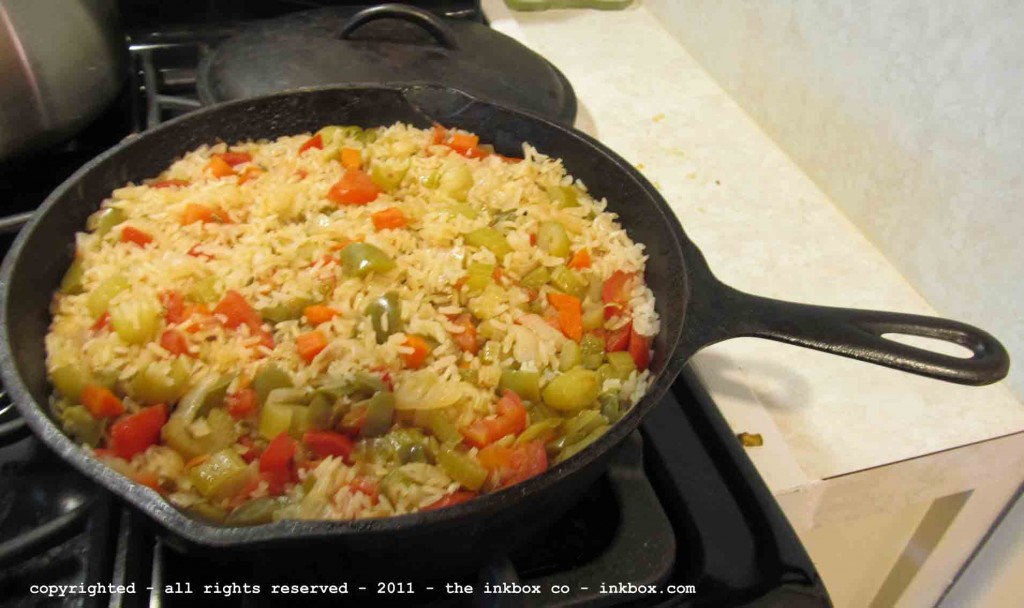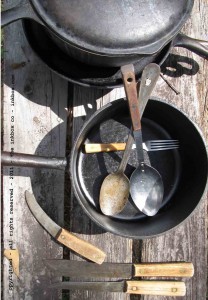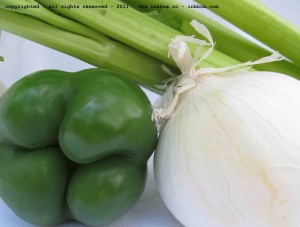I would like to write about how to cook jambalaya as a metaphor for how I wrote of this novel. We will mix these two domains, cooking and writing. This mixing is essential to bricolaging a really good jambalaya. We’ll even shift past, present, and future tenses and change grammatical person and mood where I think it might add some seasoning to the essay..
When I attended college in the Midwest of the United States, I invited my friends to my home to eat jambalaya on Friday afternoons. It was a convivial gathering meant to celebrate and commiserate the joys and sorrows of tests, papers, and professors.
And so too, I invite you to read my jambalaya in the form of this novel. I hope you find some respite from your cares as you serve yourself and hopefully become engrossed in the book. Perhaps you might taste the joy and pride I find in Cajun culture.
For my friends in the Midwest some thirty years ago, it was a great treat to eat an exotic dish as I hope you will enjoy this story. Rather than simply presenting the dish already cooked, I enjoyed preparing the jambalaya in a sort of cooking class, while we drank beer and reviewed the week’s events. I chopped vegetables, browned meat, added stock, and seasoned the pot.
My friends found this odd. Most men did not cook like I did. No one in the Midwest invited guests to supper and then cooked the meal when people arrived. They expected the dish to be ready to be served. Little did they know that men in my family are famous cooks among their circle of friends and relatives; and little did they know that cooking for friends and family is what many Cajuns do for entertainment. Little do you know that I am a noted cook and story teller among my friends and family. Together, we gather often just to cook and tell stories.
So too you, like my Midwest friends, may have arrived at this essay and wonder, why have I written all this? Well, I enjoyed presenting an exotic dish so that my guests would have appreciated it as I too hope you might appreciate the work that went into creating this novel. I wanted my guests and readers to enjoy the subtle flavors and images that ran through my work.
This essay is about how the story was created. If you want to read the theory of how I wrote this book, then read my essay on Bricolage ,a French word for a kind of tinkering with old myths, and dead metaphors to create something new.
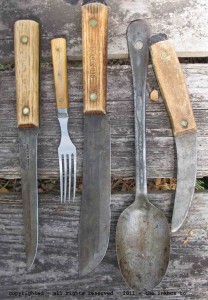
I used these knives, spoons and a fork to cook up this essay on how to prepare jambalaya. There are 14 parts of the essay. I hope each part is as tasty as the other. Each part is different, but I sought ot meld the topics into a whole so that each component would flavor the other. It's not just a collection of odds and ends randomly placed; but rather the assemblage was created with a bricolage in mind.
1-Cuisine
2-Characterization
3-Geography
4-Personal Acknowledgements
5-Graphics
6-Cinema
7-Music
8-Mythic References
9-Translations
10-Textual References
11-Trademarks
12-Bibliography
13-Jambalaya
14-Colophon
1
Cuisine
| Next Section | Top of Page |
This section is not complete.
2-
Characterization
| Next Section | Top of Page |
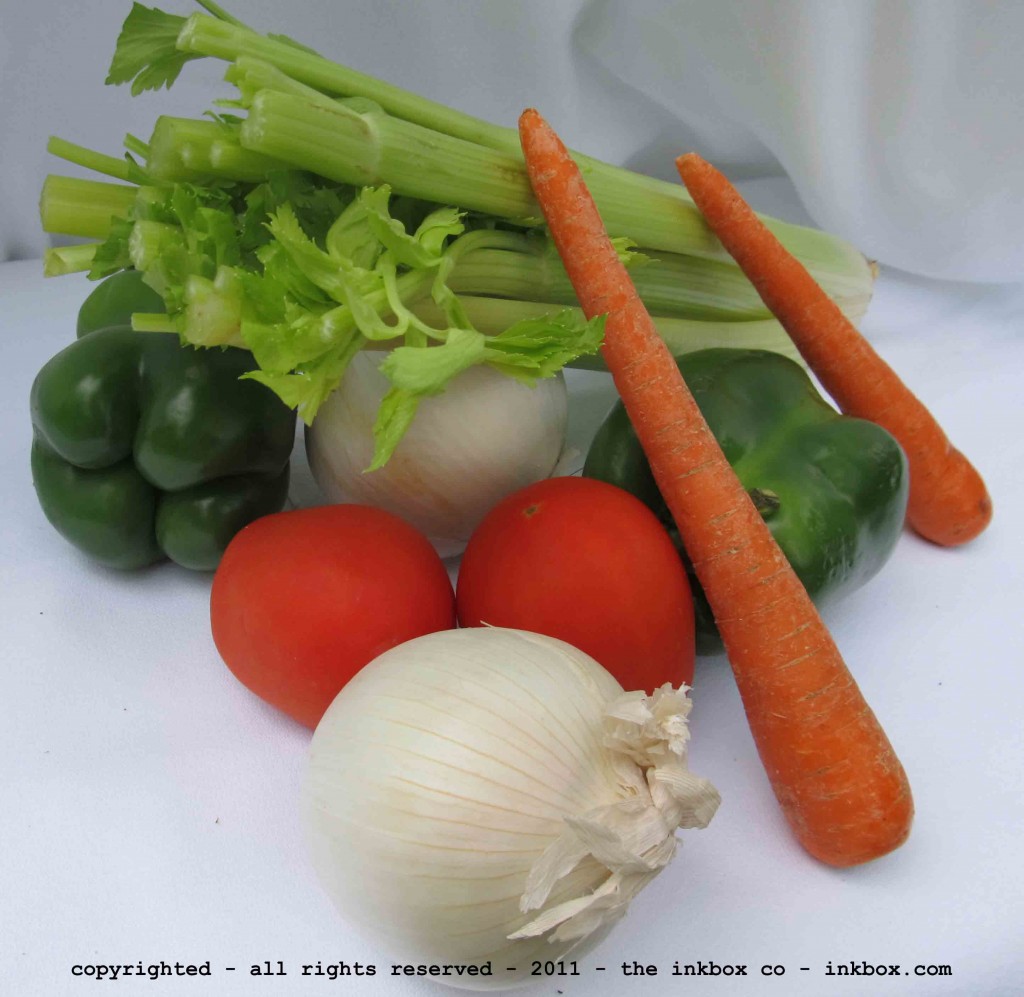
Jambalaya characters, also known a mere vegetables in the hands of the hacks, but in the hands of a good story teller, these can produce a great plate of words.
The book is peopled by real and imaginary people. These real people are all deceased, public figures, but they speak in imagined dialogs with imaginary characters. Some characters reflect in part group stereotypes, but all are modified by individual characteristics usually taken from more than one real person to create a composite character. Any similarity to a single person is entirely by chance as I have mixed this jambalaya together.
A stiff word of warning should also be added to my local contemporaries: to untangle the fiction from the real elements of a character, a time and a place destroys the magic of the jambalaya. It also destroys the privacy that I have sought to preserve. So I ask that you leave the jambalaya as it was created to be eaten, but not to be deconstructed.
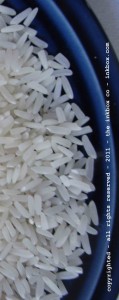
Rice is the main ingredient of a Jambalaya. Get the best character you can find and then add him (or her) to the pot.
It is apparent to anyone acquainted with the 1960’s in Louisiana that Warren “Puggy” J. Moity is a large part of this jambalaya and main ingredient in the characterization of Woody. To those people, the premise that Puggy would have discovered the plot to assassinate JFK cannot help to bring a smile. But it is a dark smile and simile upon closer examination. Let me explain:
Puggy was a widely known, deceased political candidate in Cajun Louisiana in the 1960’s and 1970’s. He was also a kind of detective, part lawyer, part flim-flam man, part political candidate for hire. Both he and Woody were personalities in the then new medium of television. Although he was a clown in the popular imagination, he was a real life man who seemed to have stepped out of a film noir for many of the people that I spoke to about his life.
But Puggy and Woody are different. Let me explain why.
I collected many informal stories about Puggy, but these were not collected in any disciplined manner and so the results do not reflect a balanced attempt at scholarship nor reportage. The goal was to collect illustrative examples and extrapolate from those examples into story elements.
I also made a successful request under the Freedom of Information Act (FOIA) to the Federal Bureau of Investigation (FBI) for information related to Puggy. Little of this file is used because much of the file dealt with impersonation of a federal officer charges upon which Puggy was found not guilty. Woody indeed does impersonate someone, but it is Adrien Baillageon, a real French-Canadian wrestler, popular in Cajun Louisiana in the 1960’s. Furthermore, Woody’s abductors impersonate federal officers on the road to Johnson Bayou.
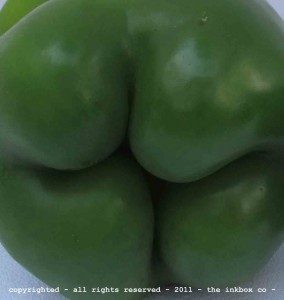
In public, Puggy enjoyed being the butt of many jokes; for he was indeed a butt. But to others in private I am told, his humor was a cloak for a dark sense of threatening humor. To others, he was no joke at all, but a very real character who stepped out of a film noir.
Puggy was a litigious man, who represented himself in court; but who was not a member of the bar. So I researched state and federal court records for information, the most important cases being cited by its online source, lexis.com, in my bibliography below. The US Supreme Court case, Louisiana v. Moity (1964) is used in Twisted Bayou in which Woody threatens to libel Warren LeBouef in a trail proceeding. The US Supreme Court agreed with Puggy and Woody that you can indeed libel someone in a court proceeding, but yet it is not libel. The other cited cases in the bibliography are used as background information that was not used directly. I reviewed the records of the Kefauver investigation during the 1950’s at which Puggy testified (1951:79). That appearance before the Senate committee as did Puggy’s selling of slot machines made its way into the book.
I collected oral histories that were readily at hand about his deceased contemporaries, especially Iberia Parish Sheriff G. Jerry Wattigny (his arch nemesis), Sheriff D.J. “Cat” Doucet of Saint Landry Parish and Sheriff Euda Delcambre of Vermilion Parish to understand Louisiana politics in the 1960’s. I also read about vice in the Sheriff Doucet’s biography by Fontenot and Riehl (1972).There are many scholarly works on grit of Louisiana politics that were useful: Gold (1978); Kurtz (2001), Kurtz and Peoples (1990), Liebling (1970), Maginnis (2000), and Williams (1969) as well as well researched fiction: Collins (1992) who deals with the assassination of Huey Long. The confrontation between Woody and Edwin Hargrave’s in the restroom is taken from Huey Long’s confrontation at Sands Point, New York (Williams 1969:649-652).
I also spoke to Cajuns who are veterans of World War II as well as spoke and consulted the work of Jason P. Theriot (2003) and his oral history project on Cajuns in World War II. As far as I could readily determine, Puggy served honorably as a kind of clerk during the war and was not a hero like Woody. But in what theater he served or his rank remains a mystery to me today as I write these lines.
I did not research and so did not use any information about Puggy’s family life. That was too private a bridge to cross. Any resemblance between Puggy’s family to Arianne and Sonny is entirely accidental. As will become apparent in the remainder of the essay, Arianne’s and Sonny’s characterization and their participation in the jambalaya is based on a long dead classic Greek myth. Another main ingredient in that jambalaya is trickster tales told around the world.
Moreover, Texas plays a role as a place of escape from Louisiana. It is place that looms over the events in the book. It is where Woody’s sister lives, where Woody will escape and where the JFK assassination will occur. Puggy has little to do with Texas as far as I know.
As is discussed below, Woody is in part based trickster characters in European, African and Native American myths. Thus, Woody is a complex character who bears only a surface resemblance to Puggy.

The JFK Assassination is the red pepper of the dish. It is a small element, but it gives character to the entire dish. I use it sparingly. I hope it suits your taste.
The literature on the Kennedy assassination is immense so I cite only those essential works that have guided the writing of the tale. At the beginning, I selected two key elements: that Clay Shaw of New Orleans uses the pseudonym of Clay Bertrand of Lafayette; that the District Attorney Jim Garrison accuses Shaw without much substance as a strategy to prevent the discovery of the mastermind, Carlos Marcello. From these two suppositions, the entire tale evolves. I have found these works to be particularly insightful: Blakey and Billings (1992), Davis (1989), Garrison (1988), Newman (1995), Oglesby (1988) Weberman and Canfield (1992), and Weisberg (1967).
Additionally, Weberman also creates an Internet site at ajweberman.com with digitized primary Freedom of Information Act documents. The site is vast and is worthy of study by anyone who wishes to read the original source material. Nodule 13 discusses Richard M. Nixon, James Jesus Angleton, David Atlee Phillips, Warren Debrueys, Bernardo De Torres, Carlos Bringuier, John Martino, David Sanchez Morales, Barnard Barker, James McCord, Carlos Marcello, Jimmy Hoffa, and Santo Trafficante, Jr. Nodule 14 discusses Kennedy & the Cuban Exile Militias and the Bay of Pigs Dump. Both nodules deal with Oswald in New Orleans and Louisiana. Another primary and secondary source web sites consulted are mcadams.posc.mu.edu by John McAdams. This site is also vast, but it has much more commentary along with citations of related primary and secondary sources. A similar website, jfklancer.com, provides transcriptions of telephone transcriptions of Marcello Brilab tapes (Assassination Records Review Board 1998). These are invaluable in seeking to hear Marcello speak before writing dialogue. I am especially indebted to Debra J. Conway for providing that information in hard copy.
3
Geography
| Next Section | Top of Page |
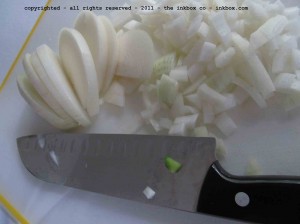
Louisiana has a lot of onions in its character. When you chop Louisiana characters getting them ready for the book, they invariably bring tears to your eyes. If you breath through your nose, the fumes will make you cry. You have to breath through your mouth to reduce the tears and temptation to add your tears to the manuscript. But in the end, those tears find their way into the jambalaya anyway. This place of onions can be really sad. But like the cook books say "I'm laughin' just to keep from cryin'." So use Louisiana despite its predilection to be morose. Embrace its sadness and within that sadness find joy. The people of Louisiana have always triumphed in the end. They are truly heroic, especially those who were forced to migrate there from Arcadia in the Greek Peninsula, kidnapped from the kingdoms of the Ashanti, and the descendants of the peoples who once knew a man called Pontiac.
Unity of time and place takes precedence over characterization and plotting. I have tried to convey to you the distances, the places, the travel times, and above all, my reverence for this place I have call my home, a place called Louisiana, a place sacred to all Cajuns, the place where our ancestors found succor from the storms of history and created an entire culture, a language, a cuisine, an architecture, and a way life, that we love so much. It is a place filled with dense symbols of time and place so like a human character, this character called Louisiana. But as does the other characters in this tale, this real place plays tricks upon the reader and other times, it is as true to itself as Cajun sunrise.
4
Personal Acknowledgements
| Next Section | Top of Page |
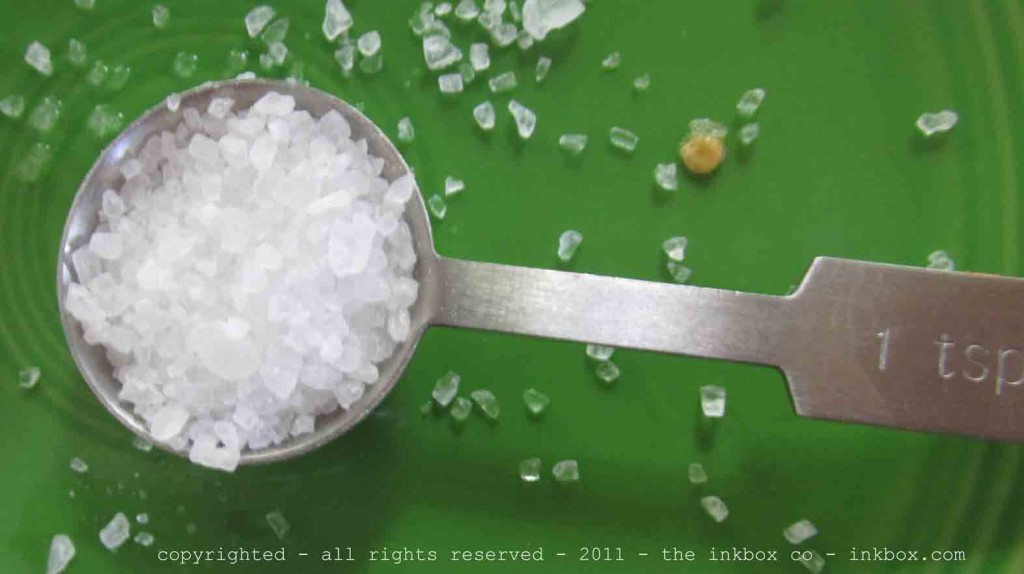
Cajun culture is the salt of the novel. It brings out the inherent flavor the characterization, the setting, and the time. A Cajun dish is always well seasoned.
This section is not complete.
5
Graphics
| Next Section | Top of Page |
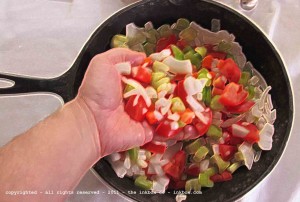
Here's a trick: Once you've chopped the words up, add olive oil and then mix them well so that each chopped word comes in contact with each other word. The flavor of each individual word transmits its essence through the oil. It is a secret that I learned from a master writer. This technique will enhance the flavor of the jambalaya in the same manner in which I have subtly enhanced this photo. Click the photo to see the enhanced short words combined into what I think are sentences with graphic beauty.
I created the illustrations used in this book, as posted in Words Sketched. The 1963 street patterns were derived by studying period maps and aerial photographs in Lafayette and Abbeville, Louisiana. The base map for New Orleans is digitized from a 2008 New Orleans Metropolitan Convention and Visitor’s Bureau map and modified to reflect the 1963 street patterns using a map published by L. De Simonin Publications Publishers and entitled “Transit Guide and City Map of the New Orleans, New Orleans, La. (1959). The maps of Southwest and Southeast Louisiana are digitized from the official Louisiana State Department of Highway map dated June, 1963. The Evangeline and Jung Hotels are sketched from period postcards as well as site visits. The sketches of vehicles are based on period advertisements, and my own photographs of vehicles similar to the ones describes in the book. The Hadacol Caravan flyer is based in large part on a flyer enclosed within a 1950’s box of Hadacol. The Fenwick Sanitarium flyer is an 1901 advertisement in the medical journal, The Medical Brief, as cited in the bibliography. The title page of The Prince by Machiavelli along with a quote are type set from the 1898 edition by George Bell & Sons. The depiction of the Monsieur Orec is taken from an illustration for a traveler’s account of Abbeville and vicinity by Charles Dudley Warner (1887). Saint Michael the Archangel is digitized from a holy card published in Tournai, Belgium by Society of St. John the Evangelist, circa 1882. The prayer found at the end of Chapter 7 is taken from the reverse side of the card. For a discussion of the publisher, see the Desclée, Lefebvre, and Company (Wikipedia: 2011): Henri and Jules Desclée) The illustration entitled “Morphine” utilizes snippets taken from the 1901 Fenwick Sanitarium advertisement. The Hands Off Cuba Flyer is a digitized from a reprinted flyer in Warren Commission Exhibits, Volume XVI, page 807, Commission Exhibit No. 1412. See Newman (1995:300 ff) for various reproductions and discussion. The hand gun superimposed on the flyer is sketched from replica advertisement of a M1911 US government issue military pistol.
Although Woody utilizes a Lietz 35mm film camera, many of the photographs were taken with a digital Canon G-3 camera modified to capture infra-red images. The remaining images are photographed with a variety of both film and digital cameras ranging from a traditional 35MM SLR (Pentax Spotmatic F) to a computerized 35MM SLR (N50), to older digital cameras (Sony CD-250) to digital compact cameras (Canon SX-130). The photographs are taken over a period of 31 years from 1980 to 2011.
Unless otherwise noted, all photographs are created by me.
6
Cinema
| Next Section | Top of Page |
Film noir is a genre of American and French cinema that deeply influences the taste of the story elements of Twisted Bayou. The literary equivalent of this type of tale is called by some “hard boiled” or “tough guy” fiction (Spillane and Collins 2002:1). These films were shot in black and white with many shadows.
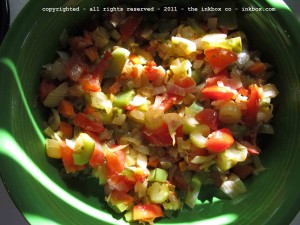
Here is another trick: I cooked the words for the jambalaya in olive oil and then I removed them from the pot to let them sit and transmit their flavors to one another. Like film noir, the words hid in the shadows and their flavors melded. When I read them, I edited them with a new eye to create a new taste.
Film and the written word come together in an influential book by Daniel Mainwaring, written under the pseudonym of Geoffrey Homes, who publishes Build my Gallows High in 1946. The book is made into a movie, Out of the Past (1947), which is directed Jacques Tourneur and in which Robert Mitchum, Jane Greer, Kirk Douglas, and Rhonda Fleming play the primary roles. The movie is released on DVD with a commentary by James Ursini, in which he outlines those elements essential for film noir. Additionally, he co-writes one of the most complete books on this subject, Film Noir Encyclopedia (2010: Silver, Ward, Ursini, Profirio).
Elements from these 18 films noirs are essential to the jambalaya:
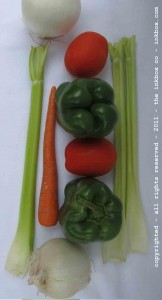
I used these vegetables to make my jambalaya. The second pepper showed up for the photo shoot. It really didn't appear in the jambalaya. You know how bell peppers are, all those curves for the eye and no real bite when it comes to pepper flavor. They're just so mild and sweet that I had to let the pepper make its appearance.
1-
Elevator to the Gallows (French: -Ascenseur pour l’echafaud – 1958)
directed by Louis Malle and starring Jeanne Moreau; with a soundtrack by Miles Davis, Ascenseur pour l’échafaud
2-
The Big Sleep (1946) directed by Howard Hawks and starring Humphrey Bogart;
3-
Chinatown (1974)
directed by Roman Polanski and starring Jack Nicholson;
4-
The Conversation (1974)
directed by Francis Ford Coppola and starring Gene Hackman;
5-
Double Indemnity (1944)
directed by Billy Wilder and starring Fred MacMurray;
6-
Dark Passage (1947)
directed by Delmer Daves and starring Humphrey Bogart;
7-
The Drowning Pool (1975)
directed by Stuart Rosenberg and starring Paul Newman;
8-
Following (1998)
directed by Christopher Nolan and starring Jeremy Theobald;
9-
The Killing (1956)
directed by Stanley Kubrick and starring Sterling Hayden;
10-
King Creole (1958)
directed by Michael Curtiz and staring Elvis Presley;
with a sound track by Elvis Presley, King Creole.
11-
Memento (2000)
directed by Christopher Nolan and starring Guy Pearce;
12-
The Naked City (1948)
directed by Jules Dassin and starring Barry Fitzgerald;
13-
Out of the Past (1947)
directed Jacques Tourneur and starring Robert Mitchum
14-
Strangers on a Train (1951) directed by Alfred Hitchcock and starring Robert Walker;
15-
A Streetcar Named Desire (1951)
directed by Elia Kazan and starring Marlon Brando
16-
The Treasure of Sierra Madre (1948)
directed by John Huston and starring Humphry Bogart;
17-
Swamp Women (1955)
directed by Roger Corman and staring Beverly Gordon;
18-
Wages of Fear (French: Le Salaire de la peur -1953)
directed by Henri-Georges Clouzot and starring Charles Vanel.
Additional direct references are made to the following five movies: First, Woody tells Minos that he is hiding behind his badge, but Minos responds that he does not need “stinkin’ badges”, a line taken from the movie, The Treasure of Sierra Madre (1947), directed by John Huston and staring Humphry Bogart. Second, Woody asks “Who you gonna believe what’s right: your own self or your own lying eyes?” which is taken from a question posed by Chico Marx in the Duck Soup (1933), a movie directed by Leo McCarey and starring Groucho, Harpo, and Chico Marx. Third, For Whom the Bell Tolls, the movie directed by Sam Wood and starring Gary Cooper and Ingrid Bergman, is mentioned by Woody when he and Arianne elope. Fourth and fifth, Woody sees two movies on the double screen of a drive-in theater: Hud, the movie directed by Martin Ritt and staring Paul Newman; and Lilies of the Field, the movie directed by Ralph Nelson and staring Sidney Portier.
7
Music
| Next Section | Top of Page |
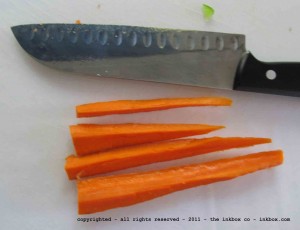
Music is like a jambalaya. Each instrument adds a certain flavor. The carrots are very subtle. They add a bit of sweetness to the mix, but not sweet so as to hinder the other instruments from playing.
I tried to capture the era with music. To do so,I typically used real songs and then transcribed them with my imagination to create my own music and lyrics.
So you cannot hear my music, but you can read my lyrics throughout the book.
You can get a taste of the jambalaya, hear the songs that served as my inspiration, and you can read some of my imagined lyrics on the web page from this site at Word Sung.
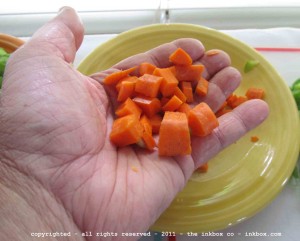
Give the carrots a hand: If you cut the carrots up to different sizes, they will impart varying degrees of flavors. You don't want a uniform carrot slice. It will lead to each bite tasting the same.
I am particularly in debt to the Jubilee Singers for two songs. Don’t you Grieve after Me is taken from their book, The Story of the Jubilee Singers With Their Songs (Marsh 1880:216). My Way is Foggy was modified from My Way is Cloudy (Marsh 1880:167).
I have also used traditional gospel songs as my inspiration. My lyrics in The Vials of Seven Angels is quoted and modified from the King James Version of Revelations, 16:1-17. Jesus Met the Woman at the Well is based from the traditional song by that same name, and is taken from John 4:13-30.
8
Mythic References
| Next Section | Top of Page |
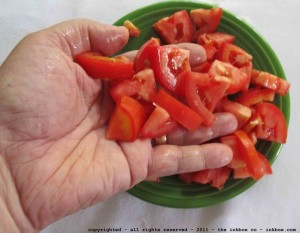
Like the mythic Odysseus, the Tomato has traveled the world. Entire national and ethnic cuisines have brought the tale of the tomato into their national consciousnesses. Which is to say, the tale of Odysseus finds its way into many diverse jambalayas. You'll even taste a hint of the Tomato in Twisted Bayou in the character of Ulysse Arceneaux, the Cajun Air America Pilot who mets David Ferry (or was it David Fairie?)
The tale of Woody is based on the myth of Theseus, the Greek hero who defeats the Minotaur and travels to Athens to discover his real fathers. (Wikipedia , Theseus: 2008) The role of Ariadne is played by Ariane. Traditionally, a group of actors assemble as the Greek classic chorus to address the audience in a sort of monologue. The role of the chorus is played by Émile, also know by his Cajun nickname, Sonny. Although he is only one character and he does not speak in a monologue to the reader, he nevertheless tries to make Woody answer questions which are in the minds of the readers. He is not always successful. Moreover, several other characters from Greek myths make their appearance in the tale as their Cajun counterpart as exampled by Minos LeBouef (King Minos) and his son Warren LeBouef (Minotaur). Monsieur Orec plays the role of oracle who predicts Woody’s death. If you read carefully, you will certainly find others.
The use of Greek mythic structures as a vehicle for modern story telling was pioneered by James Joyce in Ulysses (1922). The entire novel occurs on June 16, 1904 in Dublin while Twisted Bayou ends on the same date. Both novels utilize the stream of consciousness technique. Woody’s thoughts are singled out by a long dash before a line of text. Molly Bloom is said to symbolize, among other things, the land of Ireland (Tymoczko 1997:97-107) as Ariane symbolizes Cajun Louisiana.
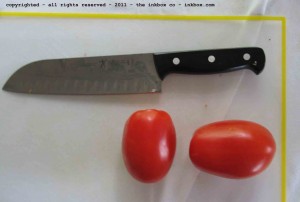
The tomato never travels without its sword. It's not afraid to shed its red essence, its veritable blood as all true heroes do in mythic tales.
I have also used Afro-American myths prominently in that Woody’s political speeches are based on Uncle Remus tales as originally published in the 1880’s by Joel Chandler (2002) and as later translated into standard English by Julius Lester (1999). I have also consulted the Uncle Remus counterparts in Louisiana Créole in Compair Bouki and Compair Lapin tales as collected by Alcée Fortier (1895). Woody and Deputy Hargrave trade insults in an Afro-American game called the dozens using sayings taken mostly from Hearn (1885), except one (doctor) from Daigle (1984:152) and two (stupidity and smartness) from LaFleur (1999:75, 77). When Woody sees the dust cloud coming, he recalls his mother’s saying about frogs and rain, a saying taken from Hearn (1885).
The trickster tales are found all over the world. The trickster in Native American stories is Coyote. Like Woody, Coyote plays tricks upon the unsuspecting; sometimes he is a buffon; occasionally he is evil; he is humorous when he wants to be; he is always clever. He is also greedy, reckless, impulsive and jealous. (Wikipedia , Coyote: 2008). He is a culture hero, but at the same he is an anti-hero who seeks his own individual satisfaction rather than the public good.
Because I am writing about Cajuns and their culture which is rooted in a deep religiosity, I have used Judeo-Christian sources to inform the reader of Woody’s world view. We meet the three angels in various guises: Saint Michael the Archangel on Woody’s religious card and in the Cathedral; Saint Gabriel whom we meet at the Evangeline Hotel as Gabriel the night manager; and Saint Raphael when we met Raphael Angelle who gives Woody a fish. We also meet Saint Peter and Saint Paul in St. Louis Cathedral in New Orleans. There are other religious structures and characters used in the tale as exampled by the three temptations of Christ in the desert (Matthew 4:1-11; cf. Mark 1:12-13, Luke 4:1-13). Marcello plays the role of the Devil in tempting Woody with three options. (Wikipedia: Temptation of Christ, 2011).
The tale of Evangeline as told by Longfellow is of a women who loses and seeks her lover, Gabriel, during Le Grand Dérangement. At the end of her search, she finds her lover who dies in her arms. And so Woody seeks his lover at the Evangeline Hotel with the aid of his angel, Gabriel the night manager, on the first night of the story. There, he confronts his death. Indeed, like the Acadian Gabriel, Woody searches for his lover during the entire tale. As told in the lyrics of the imaginary song, Ballad of Evangeline, Arianne seeks fame, but never finds it. Thus, Longfellow’s epic poem, Evangeline, A Tale of Acadie (1848) is an overall myth integrated into the novel’s structure.
9
Translations
| Next Section | Top of Page |
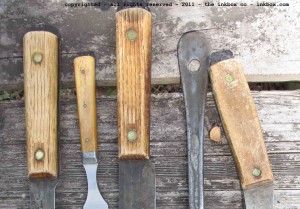
To get a handle on a culture, you have to know the original words used in its jambalaya. Without the handle of translation, you are adrift in trying to get a hold of the true meaning of a character and her relationship with the other characters.
On the whole, I want to provide a balanced translation between a strictly faithful translation and a fluent one of Cajun French. By a faithful translation, I seek to convey the meaning of the spoken word without misrepresenting the original text. As such, the original word order is translated: the house of Alice rather than Alice’s house. Because I neither add nor subtract individuals words, the translation may seem odd to the ears of an English speaker. However, I convey rather than mask the differences in the two languages. Perhaps the most important example is translating vous autres and nous autres as “you others” and “we others”. I might translate these phrases more simply as you and we. However, nothing so conveys to a speaker of any variety of French that someone is Cajun French as when she says vous autres and nous autres. Nevertheless, Cajun French is a linguistic creole with simplified verb conjugations. I do not translate verbs directly from Cajun French, but rather have sought to provide a fluent translation so that to an English speaker the text conforms to the rules of English rather than Cajun French verb conjugations. Likewise, Cajun French, like most Romance languages, typically differentiates nouns by gender, but I do translate the gender of nouns as he or she, but rather as it.
I use Cajun French in all of the essential parts of the novel because understanding Cajun French language is essential in understanding Cajun culture. For spelling and orthography, I generally follow Valdman and Rottet et al (2010), but have consulted Daigle (1984) and Faulk (1977). For grammar and verb conjugations, I refer to these last three referenced sources as well as the Cajun French website managed by the Department of French Studies at Louisiana State University (LSU). I also consulted a self-published handbook for standard French speakers created by Richard Guidry and Amanda LaFleur probably published sometime in the 1970’s.
10
Textual References
| Next Section | Top of Page |
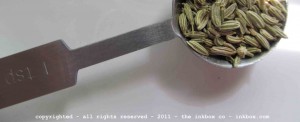
I used fennel in my jambalaya. It is one of the essential elements of Italian Cuisine. It is the green flavor you taste in Italian sausage pizza. It adds just a hint of something else that is hard to put your finger on. You've tasted it before, but never in a jambalaya. Use this trick to your advantage when you cook your novel by adding a hint of exotic references to other works.
I ask for pardon, if need be, for taking someone else’s words, but using existing works has two purposes. It is a cultural artifact that is at hand and so it is used to tell the jambalaya more effectively. More importantly the use of the others’ creative work is to acknowledge their influences in my intellectual development.
Let me first say that I have studiously avoided any reference to the work of James Lee Burke. While I have not used Burke’s words, I honor Burke by fishing the same waters in which he first has the vision and courage to write about a Cajun noir detective novel. Chapter 33 of Twisted Bayou, The Garfish, is an extended homage to Dave Robichaux and his bait shop. I remember well my anticipation for his next novel as the first three Robichaux novels appeared in the late 1980’s one after another. Now of course, the Robichaux series is well established; but when his first three works published, we did not know if another Robichaux was coming. Each was a surprise and a joy. I purchased each paperback in their turn at a drugstore in my hometown: Neon Rain (1987),Heaven’s Prisoners(1988), and Black Cherry Blues (1989). Likewise as I wrote this book, I foreswore reading about the adventures of David “Streak” Robichaux in order to prevent him from making an appearance in my jambalaya. I look forward to reading the newest Burke novels when I complete this task. It is a very private Louisiana pleasure that that I and other Cajuns take in these novels; and we are are very proud to know Burke speaks to the world about Cajun Louisiana.
“Call me Adrian” and several variations of that phrase are used throughout the book to introduce characters. The phrase is based on the first line by Melville (1851) in Moby Dick: “Call me Ishmael.” I introduce myself with the same formula in the web page, An Author, at this site. Also, Woody tracks Warren whose car is said to be a “Packard, like a huge whale swimming in some white sea, used its whiteness to fold itself into the fog and revealed itself only by the red fiery tail lights. Like makeup on a harlot’s face, the Packard hid its evil with whiteness. However, the charnel house red of its tail lights signaled its intent to be lost in the fog and commit some unknown crime.” At the end of chapter 42, Herman Melville in Moby Dick, writes that “… so that all deified Nature absolutely paints like the harlot, whose allurements cover nothing but the charnel-house within; and when we proceed further, and consider that the mystical cosmetic which produces every one of her hues, the great principle of light, for ever remains white or colourless in itself, …”
There are eight other prominent references to other works. First, Woody quotes the Declaration of Independence authored by Thomas Jefferson in his first political speech. Second, Judge DeWinter speaks of Machiavelli whose title page and a folktale printed as an illustration in the webpage, Word Sketched, at this website. Third, Woody also explains that Alfred Comeaux and Hoplite Guidry during the war were “All for one and one for all.” The phrase is taken from The Three Musketeers (1844) by Alexander Dumas, pére. Fourth, Woody when thinking of the code phrase “The King Foxtrots Juliet” says to himself “Juliet, Juliet, where art thou?” is a reference a line in the William Shakespeare play, Romeo and Juliet: “O Romeo, Romeo, wherefore art thou Romeo.” Fifth, when Woody is at the Jung Hotel, he is said to have been drawn “to a history, that had become a nightmare from which he sought to awaken.” The reference is taken from a work by James Joyce, Ullysses (1922), where Stephan Deadlus says “History … is a nightmare from which I am trying to awake.” Sixth, Woody hears Reverend Hamilton Alexander quote the King James Bible, the Gospel of John 4:14: “But whosoever drinketh of the water that I shall give him shall never thirst; but the water that I shall give him shall be in him, a well of water springing up into everlasting life” Seventh, Minos LeBouef and Carlos Marcello each ask the question, “What is truth?”, a question originally posed by Pontius Pilate in the Gospel of John 18:38. Eighth, many of the words from sermon by the Haitian priest in Woody’s Church is taken the story of the man born blind in John 4:1-41.
Additional references of lyrics not subject to copy right are discussed in the Music Section of this essay and in Word Sung on this website.
11
Trademarks
| Next Section | Top of Page |
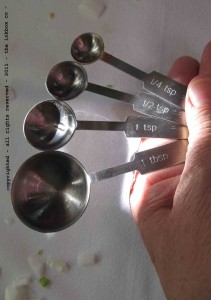
I have been very careful in using trademarks. I have measured them out exactly as needed to give a sense of time and place; yet at the same time not adding too much flavor so as not to overwhelm the suble flavors of the other vegetables.
The listing below should be taken as a literary device to account for trademarks for goods and services to which the reader might want to know additional information about goods and services used within the time period and setting of the novel.
The discussion divides trademarks into two classes: those that were readily identified and those others to which information was not located through a search of the internet and directories during 2005 to 2011. The reader should not conclude that there was a relationship between this novel and a particular good or services as indicated by the use of these trademarks nor should the reader conclude that a particular good or service was available or not available. This was simply a list of the trademarks that appeared in the book; if the reader wanted to know more about a particular instance, then this list was written as a point of departure.
Trademarks of Readily Identifiable Corporations
The following establishments and organizations were found in the City of New Orleans: Café du Monde; International Trade Mart; The Pearl Restaurant; Saint Louis Cathedral; and Saint Louis Cemetery.
Also in operation in the City of New Orleans were The Crescent City Garage and The Reilly Coffee Company, both of which were businesses mentioned in official reports of the JFK assassination.
These existing radio and television stations were cited in the novel: KLFY, TV Channel 10 in Lafayette, Louisiana; KROF, 960 AM in Abbeville, Louisiana; KSIG, 1450 AM in Crowley, Louisiana; KVOL, 1330 AM in Lafayette, Louisiana; WDIA 1070 AM in Memphis Tennessee; WDSU, 1280 AM, New Orleans, Louisiana; and XERF, 1570 AM in Ciudad Acuña, Mexico.
Trademarks of Other Corporations
All automobiles brand names used were derived from manufacturers no longer selling new vehicles. Woody’s 49 Mercury truck ceased production in 1968. Warren LeBouef’s early 1950’s Packard ended production in 1958. The black DeSoto’s mentioned in many instances were manufactured from 1928 to 1961.
The following once active, but currently closed establishments were mentioned in the vicinity of the City of Abbeville: Audrey Hotel and Barbershop; The Balinese Lounge; Billups Service Station; C’est La Guerre Lounge; Fenwick Sanitarium; Skipper’s Bar and Grill; Star Lite Lounge; and The Y.
Similarly, two other closed places were mentioned in the rural areas near of City of Abbeville: the Rock-a-Bye Club in Cow Island and Palombo’s Nite Club on Palombo’s curve north of Abbeville.
The following once active, but currently closed businesses were in and around the City of Lafayette: C’est La Guerre Lounge; The Evangeline Hotel; Four Seasons Lounge; Pop Stinson’s Café; Toby’s Oak Grove Club; and the Twin Drive In Theater.
The following once active, but currently closed businesses were found in the City of New Orleans: Balter Building; Guy Banister Associates; Inc.; Charity Hospital; Club Habana; Conservative Democrat Organization; Employers’ Survey System; Inc.; Guys and Dolls, a caberet; Jung Hotel; Latin American Reports; Maison Hospitalière; Mississippi River Valley Council; and Town and Country Motel.
Two defunct patent medicines were discussed with United States Patent and Trademark Office trademarks and were referenced with their official numbers and associated statuses: Hacacol: 75357946 (abandoned), 73666552 (canceled), 71478511 (expired) as well as Kary-on: 71654137 (expired).
12
Bibliography
| Next Section | Top of Page |

Keep your cookbook book shelves well stocked as your larder, your frig or your pantry. Don't think that you have to have the newest book either. The oldest books often have the best flavors and are well aged, well seasoned, and well, just right for the pot. Read alot and then imagine the flavors that might be conjured up. It's one of my biggest tricks.
The sources cited by the character, Pelly Cessac, are documented within her report in Chapter 30, The Zeus Project, in which some sources are fictional, but nearly all are actual documents.
The remainder of the sources used in this novel are documented below.
Ancelet, Barry Jean, Morgan, Elemore, and Rinzler, Ralph
1999 Cajun and Creole Music Makers, Musiciens cadiens et crèole. Jackson: University of Mississippi
Assassination Records Review Board
1998 Brilab Electronic Surveillance on Organized Crime Boss Carlos Marcello. d-143. (Republished) Grand Prairie, Texas: JFK Lancer Resource Mail Order.
Aswell, Tom
2009 Louisiana Rocks!: The True Genesis of Rock and Roll. Gretna, LA: Pelican Publishing Company
Bernard, Shane K.
1996 Swamp Pop. Jackson, MS: University Press of Mississippi
Blakey, G. Robert and Billings, Richard N.
1992 Fatal Hour: the Assassination of President Kennedy By Organized Crime. New York: Berkeley Publishing Group.
Brasseaux, Ryan
2009 Cajun Breakdown: The Emergence of an American-Made Music. New York, NY: Oxford University Press USA.
Burke, James Lee
1987 The Neon Rain (Dave Robicheaux Series #1). New York, NY: Henry Holt & Company.
1988 Heaven’s Prisoners (Dave Robicheaux Series #2).New York, NY: Henry Holt & Company.
1989 Black Cherry Blues. (Dave Robicheaux Series #3).New York, NY: Henry Holt & Company.
Collins, Max Allan
1996 Blood and Thunder. New York: Signet.
Conway, Debra J.
2008 JFK Lancer. Website.
Department of French Studies at Louisiana State University (LSU)
2011 Les pages cadiennes de LSU: LSU Cajun pages.
Daigle, Rev. Jules O.
1984 A Dictionary of the Cajun Language. Ann Arbor, Michigan: Edwards Brothers, Inc.
Davis, John H.
1989 Mafia Kingfish: Carlos Marcello and the Assassination of John F. Kennedy. New York: McGraw-Hill Publishing Company.
Dewitt, Mark
2008 Cajun and Zydeco Dance Music in Northern California
Modern Pleasures in a Postmodern World Jackson, MS: University Press of Mississippi
Dumas, Alexander, Pére
1844 Les Trois Mousquetaires. Originally published in the French magazine, Le Siècle in March, April, May, June, July 1844.
Fenwick Sanitarium
1901 Opium, Morphine, Cocaine, Chloral, Hyoscin (and) Whiskey Habits, Medical Brief, Volume XXIX, No. 12: 1885 December, 1901
Fontenot, Mary Alice and Riehl, Vincent
1972 The Cat and Saint Landry: A biography of Sheriff D.J. “Cat” Doucet of Saint Landry Parish (1936-1940; 1952-1968). Baton Rouge: Claitor’s Publishing Division.
Fortier, Alcée
1895 Louisiana Folk-tales in French Dialect and English Translation. Boston and New York: Houghton, Mifflin and Company.
Faulk, Donald James
1977 Cajun French I: The first written record and definitive study of the Cajun Language as spoken by the people in Vermilion and surrounding parishes. Abbeville: Cajun Press, Inc.
Folse, John
2004 The Encyclopedia of Cajun & Creole Cuisine. Gonzales, LA: Chef John Folse & Company
Forster, E.M.
1967 Two Cheers for Democracy. Orlando, Florida: Harcourt, Brace and Company.
Federal Bureau of Investigation
2005 Internal correspondence and memos on Warren James Moity released November 7, 2005 by David M. Hardy, Section Chief,Record/Information Dissemination Section, Records Management Section(Freedom of Information Act Request).
François, Raymond E.
1995 Yé Yaille, Chére: Traditional Cajun Dance Music. Lafayette, LA: Thunderstone Press.
Garrison, Jim
1988 On the Trail of the Assassins. New York: Warner Books Edition.
Gould, Philip,
1992 Cajun Music and Zydeco. Baton Rouge: Louisiana State University Press
Guidry, Richard and LaFleur, Amanda
1970(circa) Le francais louisinais: un aperçu général. Lafayette: (Self-published).
Gold, Gerald L.
1978 Cousin and the gros chiens: The Limits of Cajun political rhetoric. Toronto(?): Projet Louisiane.
Harris, Joel Chandler
2002 The Complete Tales of Uncle Remus. New York: Houghton Mifflin Company.
Hayes, Alexandra
2002 Zydeco Shoes: A Sensory Tour of Cajun Culture. Gretna, LA: Pelican Publishing Co.
Hearn, Lafcadio
1885 Gombo Zhebes: Little Dictionary of Creole Proverbs Selected from Six Dialects. New York.: Will H. Coleman, Astor House.
Homes, Geoffrey (aka Mainwaring, Daniel)
1946 Build My Gallows High New York: William Morrow & Co.
Joyce, James
1922 Ulysses. Paris: Sylvia Beach.
Junior League of Lafayette
1967 Talk about Good!: Le Livre de la Cuisine de Lafayette
Lafayette, LA: Junior League of Lafayette
Rick Koster
2002 Louisiana Music: A Journey from R&B to Zydeco,Jazz to Country,Blues to Gospel,Cajun Music to Swamp Pop to Carnival Music and Beyond Cambridge, MA: Da Capo Press.
Kurtz, Michael L.
2001 “Political Corruption and Organized Crime in Louisiana: The FBI Files on Earl Long”, pp. 475-494 in The Louisiana Purchase Bicentennial Series in Louisiana History, Volume VIII, The Age of the Longs Louisiana 1928-1960, edited by Edward F. Haas. Lafayette: Center for Louisiana Studies, University of Louisiana at Lafayette.
1988 Political Corruption and Organized Crime in Louisiana: The FBI Files on Earl Long. Louisiana History: The Journal of the Louisiana Historical Association Vol. 29, No. 3, Summer, 1988
Kurtz, Michael L. and Peoples, Morgan D.
1990 Earl K. Long: The Saga of Uncle Earl and Louisiana Politics. Baton Rouge: Louisiana State University Press.
LaFleur, Amanda
1999 Tonnerre Mes Chiens!: A glossary of Louisiana French figures of speech. Ville Platte, Louisiana: Renouveau Publishing (First Edition).
The LeBlanc Corporation
1951(circa) Senator LeBlanc’s Sensation New Hadacol Caravan Show is Coming (Flyer). Lafayette: The LeBlanc Corporation
Lester, Julius
1999 Uncle Remus: The Complete Tales as told by Julius Lester. New York: Phyllis Fogelman Books.
Lévi-Strauss, Claude
1968 The Savage Mind. Chicago: University of Chicago Press
1983 &emspThe Raw and the Cooked.
Lexis.com
1979 Warren J. Moity, Sr. v. Mercer B. Busch 368 So. 2d 1134; 1979 Louisiana Court of Appeals
1969 State of Louisiana ex rel, J. Arthur Roy v. Warren J. Moity et al 225 So. 2d 759; Louisiana Court of Appeals.
1964 Moity v. Louisiana 379 U.S. 201; 85 S. Ct. 323; 13 L. Ed. 339 Us Supreme Court.
1960 Warren J. Moity v. Louisiana State bar Association 239 La. 1081; 1021 So. 2d 87. Louisiana Supreme Court
Liebling, A.J.
1970 The Earl of Louisiana, Baton Rouge: Louisiana State University Press.
Louisiana State Department of Highways
June,1963 Map of Louisiana. Baton Rouge: State of Louisiana.
Longfellow, Henry Wadsworth
1848 Evangeline, A Tale of Acadie. London: H.G. Clark and Co.
Machiavelli, Niccolo
1989 The History of Florence and the Affairs of Italy from the Earliest of Times to the Lorenzo the Magnificent together with The Prince and various Historical Tracts. London: George Bells & Sons.
MacDonald, Ross
1950 The Drowning Pool. New York: Random House.
Marsh, J.B.T.
1880 The Story of the Jubilee Singers with their songs. Boston: H.O. Houghton and Company
Maginnis, John
2000 The Politics of Reform, PAR: 50 Years of Changing Louisiana. Baton Rouge: Public Affairs Research Council.
Melville, Herman
1851 Moby Dick; or the Whale. New York: Harper Brothers, Publishers, and London: Richard Bentley.
Newman, John
1995 Oswald and the CIA. New York: Carroll & Graf.
New Orleans Convention and Visitors Bureau
2008 Map of New Orleans. New Orleans:publisher unknown.
Oglesby, Carl
1988 “Afterword”, pp. 348-361 in Jim Garrison, On the Trail of Assassins. New York: Warner Books Edition.
Spillane, Mickey and Collins, Max Allan (eds)
2002 A Century of Noir. New York: New American Library (Penguin).
Special Committee to Investigate Organized Crime in Interstate Commerce
1951 Third Interim Report.Washington D.C: U.S. Government Printing Office.
Stivale,Charles J.; Fish, Stanely; Jameson, Fredric
2002 Disenchanting Les Bons Temps: Identity and Authenticity in Cajun Music and Dance. Durham, NC:Duke University Press.
Theriot, Jason P.
2003 To Honor Our Veterans: An Oral History of World War II Veterans from the Bayou Country, Volume II: The Mediterranean Campaign & the Homefront. Houston: Jason P. Theriot.
Turner, Steve
1996 Jack Kerouac: Angelheaded Hipster. London, England: Bloomsbury Books.
Tymoczko, Maria
1997 The Irish Ulysses. Berkeley: University of California Press.
Unrue, Darlene Harbour
2005 Katherine Anne Porter: The Life of an Artist. Oxford, Mississippi: University Press of Mississippi
Silver, Alain; Ward, Elizabeth; Ursini, James; Porfirio, Robert
2010 Film Noir Encyclopedia New York: The Overlook Press.
The Warren Commission
1964 Investigation of the Assassination of John F. Kennedy, Hearings before the Presidents Commission on the Assassination of President Kennedy.Exhibits 885 to 1053. Volume XVI. Washington: US Government Printing Office.
Weberman, Alan J.
2011 Ajweberman.com
2011 Nodule 14: Kennedy & the Cuban Exile Militias and the Bay of Pigs Dump.
Weberman, Alan J. and Canfield, Michael
1992 Coup d’Etat in America: The CIA and the Assassination of John F. Kennedy. San Francisco: Quick American Archives.
Weisberg, Harold
1967 Oswald in New Orleans: Case for Conspiracy with the C.I.A. New York: Canyon Books.
Wikipedia
2011 Andouille
2011 Ascenseur pour l’échafaud – the soundtrack
2011 Basmati
2011 Film noir
2011 The Big Sleep
2011 Cajun cuisine
2011 Chinatown
2011 The Conversation
2011 List of defunct United States automobile manufacturers
2011 Double Indemnity
2011 Dark Passage
2011 The Drowning Pool
2011 Following
2011 The Hadacol Caravan
2011 Hoppin’ John
2011 Jambalaya
2011 King Creole
2011 King Creole – the soundtrack
2011 The Killing
2011 Les Paul Guitar
2011 Memento
2011 Metaphor
2011 Lineages, clans, phratries, moieties, and matrimonial sides
2011 The Naked City
2011 Out of the Past
2011 Paella
2011 Peas and Rice
2011 Strangers on a Train
2011 A Streetcar Named Desire
2011 Swamp Women
2011 Temptation of Christ
2011 Tasso
2011 Theseus
2011 The Treasure of Sierra Madre
2011 Tumeric
2011 James Ursini
2011 The Wages of Fear
13
Jambalaya
| Next Section | Top of Page |
I remind my readers and guests, as I did in the introduction to this essay, that I might violate the genteel rules of grammer so as to convey the similarity between cooking and writing as mutually analogous metaphors. Don’t be surprised at some mixed metaphors, simplistic similes, acidic analogies, or prodigal parables. There are also a few Texas tangents.
If you want to read more about the relationship between cooking and story telling, you can read Lévi-Strauss’ The Raw and the Uncooked (1983). If you want a taste of Lévi-Strauss genes or jeans, you can read about the culinary triangle.
Now, jambalaya is made from elements at hand much like myths which use the method of bricolage, that is taking elements readily available and assembling them in new ways.
The assemblage is guided by a set of rules. This appetizer (you are now reading) conveys those rules on how to cook jambalaya. If you understand these rules, the number of kinds of jambalaya you can cook will be limited only by your imagination. I will give you an easy recipe for an actual jambalaya to cook as a kind of short story, but you will be able to cook whole novels when we’re done reading the extended essay.
I cook the jambalaya a certain way, but that way is only one of many ways as different cooks composes dishes to suit their readers. Some other storytellers cook their jambalaya in other ways. You will hear many different versions of the same tale and you might be tempted to argue about which kind of jambalaya is the real one. Be assured that as along as you follow the rules established in this essay you will tell real stories.
Here is the short version of the Woody’s Jambalaya told in the traditional short form of recipe storytelling. If you want to more than just a little taste jambalaya presented below, then read the remainder of the essay: you will get all of the cousins, clans, and tribes of jambalaya.
(1) Select the vegetables at hand:
2 – large Roma Tomatoes
1 – large bell pepper
1 – carrot
3 – stalks of celery
1 – large onion
(2) Select the oil at hand:
2 Tbsp of olive oil for the vegetables
2 Tbsp of olive oil for the rice
(3) Select the seasonings at hand:
1/4 Tsp – red pepper
1 1 Tsp – salt
1/2 Fennel seeds
(4) Select the rice and water
3 Cups of long grain rice
3 Cups of water
(5) Select the knife, cutting boards, cooking spoon and pot.
sharp knife, don’t be a dull storyteller.
cutting boards, preferably several
one long handled cooking spoon
one large bowl and a measuring cup
2 1/2 quart heavy cast iron black plot with a lid
(6) Chop the vegetables to produce about 5 cups.
(7) Add the vegetable oil to the pot, bring to medium heat.
(8) Add vegetables, stir and mix.
(9) Reduce heat, cover with the lid, and simmer.
(10) Stir vegetables occasionally and simmer replacing the lid.
(11) Cook until the onions are clear.
(12) Remove vegetables from pot, place in a bowl.
(13) Add the rice oil to the pot, bring to high heat.
(14) Add the rice and mix with the oil.
(15) Stir continuously until the grains turn white.
(16) Add fennel and stir until color changes.
(17) Add the vegetables and stir into the rice.
(18) Add the rice water to the pot.
(19) Add the salt and pepper and stir.
(20) Heat the pot until the edges of the mixture start to boil.
(21) Reduce to a simmer and put the lid on the pot.
(22) Simmer for 45 minutes.
There are two major varieties of Louisiana Jambalaya, kind-a-sort-a-like brothers: Cajun jambalaya from rural Louisiana and the urban New Orleans jambalaya. The singular supposed difference is the use of tomatoes in New Orleans and its lack in the Prairies. This sounds like a rule meant to inhabit or inhibit your creativity. Please break this rule and it will lead to surprising results. Really!
The five categories of jambalaya ingredients are meat, vegetables, rice, seasonings, and water. I will give some general advice on the selection of these elements, what kind of pot to use, and then proceed to a simple jambalaya recipe, that I hope everyone can tell.
First off, note that the meat is optional. If animal protein is used, then it is browned on high heat to burn slightly in the pan. Although the pan is used, think of an open fire burning the meat. The pan will be deglazed during a simmering chapter to turn the white rice to a brown color and add flavor. You can use seafood, but that food is placed in the pot when simmering begins. In no case should you mix seafood and animal protein. Fish and pork chops are an abomination. So don’t mix metaphors. You can avoid this issue by simply putting in no meat or seafood – you can go vegetarian.
There are three essential vegetables: onions, bell peppers, and celery. Many people write that this is the trinity of Cajun cooking, but I never heard of such a thing until Cajun cookbooks became widely available in the 1980’s. Feel free to add some of other vegetables that range from eggplants to hot peppers to black eye beans to green beans. Quality matters. Buy local and fresh if you can. And yes, you can add tomatoes even though you are cooking Cajun jambalaya. Just say that it is Creole when you use tomatoes and you will sound like an expert. Repudiate the New Orleans myth as well as the trinity. Be an heretic.
Rice is the most important element. Buy the best you can find. As in the case of vegetables, quality matters. The best rice grown in South Louisiana for jambalaya is a variety called Toro, a long grain. If you can’t get that kind, then I would use another long grain or a good aromatic oriental rice. If you can find it, buy basmati. It’s typically imported from India or Pakistan. If you’re a cook that likes to cook local, then you can buy basmati grown near Winnie, Texas. It the same rice, but it tells slightly a different story with a Texas accent.
Don’t use short grains to make jambalaya. They’re sticky and when cooked and your jambalaya will be a sticky. Some people prefer sticky jambalaya, but I prefer a jambalaya in which the goal is each grain of rice is separated. If you don’t like that advice, just ignore it. You might like sticky. To help you embrace sticky, I will even tell you about distant jambalaya cousins who use short grains.
In any case, you need to buy whole grains, not cracked grains. So tell the whole story, not just a part of it. When I was a boy, rice that was cracked in half was fit for only chicken feed. Really. Now some of that rice is being sold for human consumption. Really. Be sure as well that the rice is white without a trace of the brown hull. Really. Jambalaya can be made from brown rice, but that is for a master cook, not for an apprentice as these instruction assume. Really.
Let me tell you where I learned this tale. My father was a cook of some renown. As I write these lines, he would be over 100 years old if he were alive. In his time, there was no such thing as a caterer. There were men and some women who you could hire for a private party like a political dinner or you could ask to contribute their time for a fund raiser. Their pay was meager: the simple pleasure of cooking, perhaps $40 in today’s money, a few beers maybe, the leftovers, and of course, the joy of cooking for large groups of people. I still meet people today who remember meals that my father cooked some 40 years ago in his prime.
I did not so much learn how to cook from my father; for it was naturally expected that all men cook. Rather, I learned how to eat from my father. He only used two primary seasonings: salt and red pepper. He also grew a bay leaf tree and would use those when he remembered. No black pepper, that too is an abomination. Many cooks today call themselves Cajun by adding extreme amounts of pepper. This I believe is a marketing strategy to sell more red pepper to the unsuspecting. Really. But when it came to salt, my father knew few limits. Imagine the taste of seawater diluted just enough so that you could taste the hint of vegetables in the pot. I believe he cooked with a lot of salt as a strategy to make you drink more beer, especially at political suppers where drinking was heavy. The leftovers he brought back home after cooking for other kinds of dinners was far less salty.
My father cooked jambalaya in a five gallon circular black cast iron pot with a cypress paddle. He heated the pot with butane that was given freely by his oil and gas company to their employees. An old, recycled, water heater burner was used to heat the pot.
This is a master’s jambalaya instrument just as a Les Paul is made for serious guitarists. It can be played by an apprentice or journeyman, but the finesse is just gone. You can just play a much simpler song with simpler lyrics by using a black cast iron pot that is well seasoned. The pot need not be large. I learned to cook jambalaya on a 15 inch wide skillet, about three inches deep. It has a heavy lid to keep the steam the rice.
To begin, select your vegetables. For every cup of rice, you should use about one and one-half cup of chopped vegetables. If you are preparing vegetarian jambalaya, then increase that mixture to two to two and a half cups of chopped vegetables to one cup of rice. If you like a lot of vegetables and are adding meat, then use the vegetarian mix.
Here is a tangent about vegetarianism, Cajun cooking, and environmental diversity: Cajun cooking is the cooking of the peasantry. Peasants always eat a lot of vegetables because by definition a peasant is one who grows his own food and participates sparingly in the moneyed economy. Meat is used sparingly because it is expensive in that kind of economy. Or so the story goes. Cajuns are somewhat of the exception here. They were peasants who lived in the land of Louisiana, a bountiful place when it was first settled and continues to be despite the environmental disasters of recent years. The place has a wide variety of food because so many ecological niches overlapped and border one another. Diversity is the basis of this bountiful place. This diversity is represented in their ethnicity and their cooking, particularly jambalaya. Some people may say that vegetarian jambalaya is not traditional. But in Talk About Good (1967:293), in this great grandma of all Cajun cookbooks, black eye pea jambalaya is featured. But more about this subject latter.
The first step is to break some traditional rules. If you don’t break this rule, you’ll just tell the same old stories. My father never precooked his rice. He added his rice raw at the end of the preparation. I discovered that you can add about three-fourths of a table spoon of cooking oil to one cup of rice. Use hog lard if you want to use the real thing; or if you want to be healthy, use olive oil if that’s what you like or any other kind of oil that is at hand, except motor oil. Each oil imparts its own flavor and this flavor will be serve as the premise of the story. The oil will allow the individual grains of rice not to stick to other grains of rice. So cook the rice and oil on high heat stirring constantly until the grains turn white. When that is done, remove the rice from the pot.
In this recipe, use three cups of raw rice and two table spoons of cooking oil.
The next step is to cook the meat using high heat stirring constantly. As I alluded to above, imagine an open fire and you are trying to salvage it from being burnt or breaking apart and falling into the fire.
You can use what is at hand or go out and hunt and gather. I like to use smoked sausage from the supermarket. It has a lot of flavor in the oil. If they are available, the best thing to use is traditional Cajun favorites like andouille sausage and tasso. You could consider left over meats like pot roast or bar-b-que’d chicken and pork chops. I occasionally add the bones to the jambalaya, but this so ultra that I do it only with close family members. The general Cajun populace would consider far too country.
Cook the meat on high heat, stirring constantly. You want to create a pot that has nearly burnt bits of meat that will be deglazed later on in the cooking process when you add the water. This will transform white rice to a brown color, if you have not added tomatoes. If you want your jambalaya to have a red color, add some whole fresh tomatoes to you vegetable mix or one tablespoon of tomato paste to the water for each cup of rice. But beware: if you add tomato paste or sauce to jambalaya, you can’t use a black pot. The acidic tomatoes will remove the seasoning from the cast iron post and ruin it for a while until you cook some more in it.
You can also cook jambalaya out of crawfish, shrimp or redfish. You can even use dried shrimp like Woody does in the book. Each of these foods are tough and so hold up when cooked. The flesh of catfish or perch is just too soft to hold together when cooked; but you might try and break this rule and find out what works for you. If you do use seafood, then it is placed uncooked when you add the water later in the preparation process. Remember that if you add a fish with a lot of bones, it will be difficult to separate the fish from the bones and the rice. So consider using fillets. But you can be ultra and use bones as I have said above. They will add flavor; but you may have to hide them form your guest as any good trickster would do.
In this recipe, use about one pound of meat or seafood. As I said above, you can skip this step if this fit your taste.
Next for the vegetables: when the meat is about half way done, then add the chopped vegetables. Ideally, the onions should be clear when the meat is dark brown. Continue stirring until you swear you are going to burn the pot and then stop.
If you are using raw green beans and black eye peas, these should be precooked a bit. You can use fresh frozen with some success right of out the bag; but you will improve your jambalaya if you precooked these a bit in another pot.
Black eye jambalaya is a member of the same group of clans as peas and rice from Jamaica and the Dominican Republic and Hoppin’ John from the Low Country of South Carolina and Georgia. Jambalaya, Peas and Rice, and Hoppin’ John, all steam their rice. These three clans form what anthropologist calls a moiety. This particular moiety of the three clans of Jambalaya, Peas and Rice, and Hoppin’ John is called the Closed Pot Cousins. The word, moiety, is French for half. The other half of the clans is called the Open Pot Cousins, in which the dish is cooked in a pot without a lid and the rice is stewed. I believe that both of these moieties migrated out of Africa and are descended from one group of ancestors, who knew a good thing and refused to let it go no matter what they had to endure to keep something so precious as a great set of rice dishes and stories. These dishes, taken together are one of the great achievements of the human imagination. But this might be just a migration myth not fit for human consumption. I’ll let you be the judge.
One well-known clan from the Open Pot Moiety is a dish known as paella. It is cooked on the Iberian Peninsula and through Latin America. In Spain and Latin American a special pot is used, called Paellera: it is traditionally round, shallow and made of polished steel with two handles. But has no lid. Rather than long grain rice, a fat, short grain variety is used, known as bomba. This type of rice and pan require that the dish is constantly stirred when the rice is added. The dish is traditionally cooked by men over an open fire with pine cones and pine wood so that the smoke adds an open fire taste to an otherwise domesticated dish as found in North America.
Distantly related is an Italian dish known as risotto, which I once ate that was cooked by a Cajun cook in a fancy restaurant. Risotto violated all of the rules. First, it violated the rule of mixing meat and seafood. The cook had added crawfish, and shrimp as well as tasso and andouille sausage. He did not use the trinity of onions, bell peppers, and celery. He totally ignored everything but onion and garlic. What’s more, he added butter as the cooking oil and then added whole cream instead of water. He used a very short grain rice, so short it was almost a rounded ball. I know that he must have stirred the pot the whole time after he added the rice. The result was a gooey, sticky mass. It was dreamy, beyond anything that I had eaten or have eaten since. It was so exotic to me, I have not attempted to cook it for fear of ruining the memory of such a memorable story. The restaurant went out of business and so a great story is not being told, but perhaps you can tell it. Be sure to share it if you rediscover the lost art of Cajun Risotto.
But surely we digress; but what is a good story without at least one good tangent.
Now for the part that requires real skill: adding the water and the seasonings. Both are dependent on the what has gone on before. You will have to try these two steps many times before you are a journeyman on your way to being a master.
In general, add the same volume of fluid as the volume of water. If you have added tomato sauce or other kinds of canned tomatoes, then you need the count the fluid in those cans. Some types of rice require more or less water; cooking at different elevations require more or less water; the age of the rice and how it is stored may require more or less water. There is a trick of using your finger to measure the amount of fluid to cover the rice, but I have never been good at this method. So you might try this rule to see how it works for you: the water and fluid should just about cover the rice by about an eight of inch as measured with a one of your fingers, knuckles, finger nails or other hand parts.
How to fix a pot of jambalaya with too much or too little water: When you remove the lid and grains are hard, then quickly add about a quarter of a cup of water and put the lid on again, waiting about 10 minutes with a very low heat. You can repeat this step as many times as you need to get the rice to be fluffy. If you have added to much water and the jambalaya pot is mushy, you can try to save it by fluffing the rice with a fork to let some of the steam out; but this procedure is usually not successful.
In this recipe, add three cups of water and three cups of rice you first whitened at the beginning of this long winded story.
As to the seasoning, you can be a traditionalist and use just salt and red (cayenne) pepper. You can add a bay leaf for each cup of water that you have added. You can anything else that strikes your imagination. Some examples of spices that I have added with some success: basil, cumin, curry, fennel seed, gumbo file, hot sauce, onion power, sage, and tumeric.
The last step is to bring the pot to a boil and then let the pot go for a long time, about 45 minutes on a low heat.
This last part is the best part. As it simmers, you get to tell stories, drink a beer or prepare something else to read.
14
Colophon
| Top of Page |
This section is not complete.

